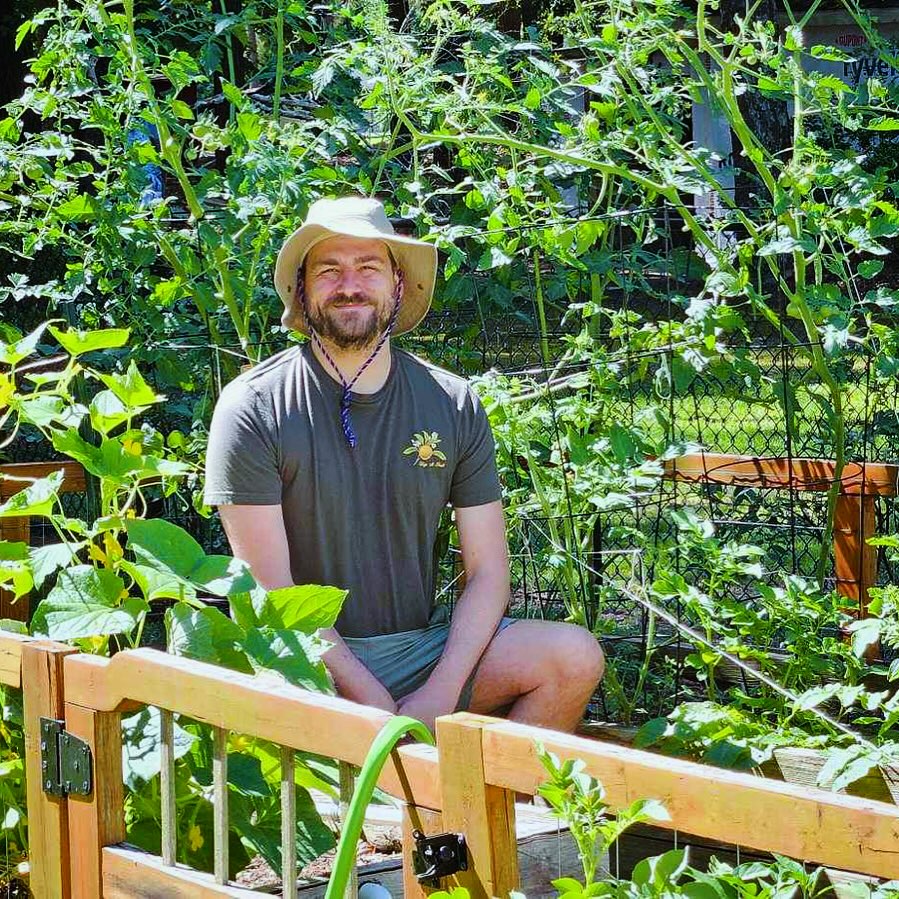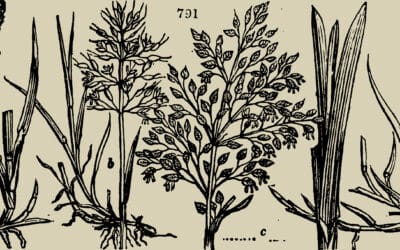Have you ever witnessed the confusing sight of your once flourishing garden starting to fade and falter, no matter how much care you pour into it? The answer to this riddle might be hidden right in front of you, in the form of soil salinity.
Carrying out a soil salinity test early on can be a game-changer, uncovering the invisible enemy that has been negatively affecting the life of your garden.
This silent threat, though often overlooked, plays an important role in affecting plant growth and the overall health of your soil ecosystem. Understanding, identifying, and addressing soil salinity through effective testing methods are huge steps in revitalizing your garden and bringing your plants back to their prime.
This guide will walk you through the ins and outs of how to detect, assess, and ease the impacts of soil salinity, protecting the health and happiness of your beloved green space.
TL;DR
We aim to:
- Highlight the importance of recognizing and managing soil salinity to ensure garden health.
- Guide on collecting soil samples from different garden areas, focusing on root zones and stressed regions.
- Suggest using either DIY testing kits or professional laboratory services for analyzing soil salinity.
- Emphasize interpreting test results, especially electrical conductivity (EC), to gauge salinity levels.
- Recommend actions based on test outcomes, like improving drainage or using gypsum, for mitigating soil salinity issues.
What is Soil Salinity?
Soil salinity refers to the presence of soluble salts in the soil, a condition that can slow down plant growth by affecting soil water uptake.
Salts in the soil attract moisture, making it difficult for plants to absorb the water they need, leading to stress and, in severe cases, plant death. Understanding this balance through soil testing is key to maintaining a garden that not only survives but thrives.
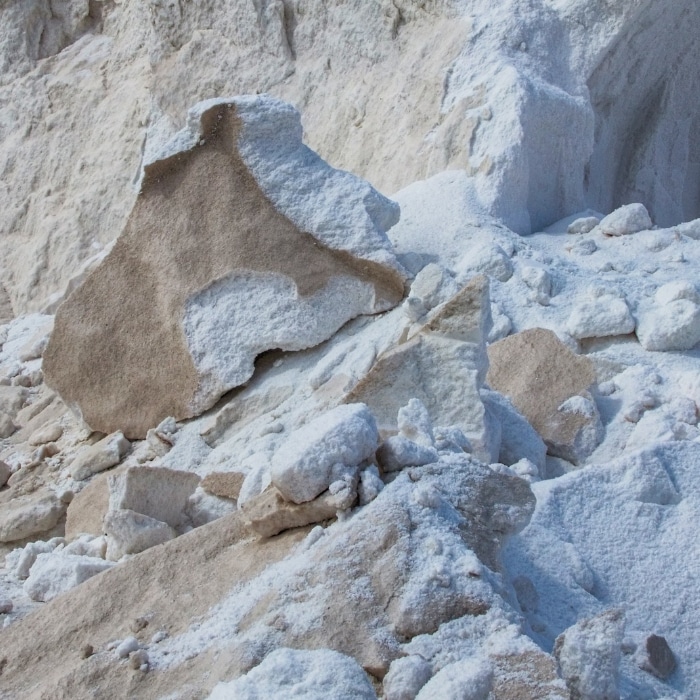
Salt. A soil salinity testis used to measure salt concentrations in agricultural soils.
Identifying Soil Salinity in Your Garden
Signs of salinity stress in plants can be subtle at first—leaf tip burn, stunted growth, and yellowing leaves. Recognizing these signs early can be very important.
My garden showed these distress signals during a particularly dry season, prompting me to investigate further. The realization that soil health directly influences plant vitality led me to explore soil salinity testing.
How to Soil Salinity Test
To accurately figure out the salinity levels in your garden, a systematic approach to soil sampling is necessary.
This involves gathering soil from different locations and depths within your gardening space, with a focus on those areas where plants show signs of stress or where growth has been notably poor.
It is very important to include both affected and seemingly healthy areas to get a complete view of your soil’s condition.
Here’s a step-by-step guide to improve the process:
- Planning Your Sampling: Map out your garden into sections based on visible plant health, data from a soil texture analysis, and usage history. This division helps in targeting specific areas that may contribute differently to the overall soil salinity profile.
- Collecting Soil Samples: Using a clean tool, such as a garden trowel or soil auger, dig small amounts of soil from a depth of 6-8 inches, which represents the active root zone for most plants. For trees and shrubs, a slightly deeper sample may be necessary to capture the conditions experienced by their deeper root systems.
- Preparing Samples for Testing: Mix soil samples from each section in a clean container to create a composite sample. If using a DIY test kit, follow the instructions precisely to prepare your sample. For laboratory analysis, transfer about a cup of the mixed soil into a clean, dry container for each garden section. Label each sample clearly with the section of the garden it represents.
- Choosing the Right Testing Method: While DIY kits provide a quick snapshot of your soil’s salinity levels, they may not offer the complete data that a professional laboratory test would. Laboratories can provide detailed analyses, including specific salt concentrations, pH levels, and even recommendations for amendment. Consider your needs and choose accordingly.
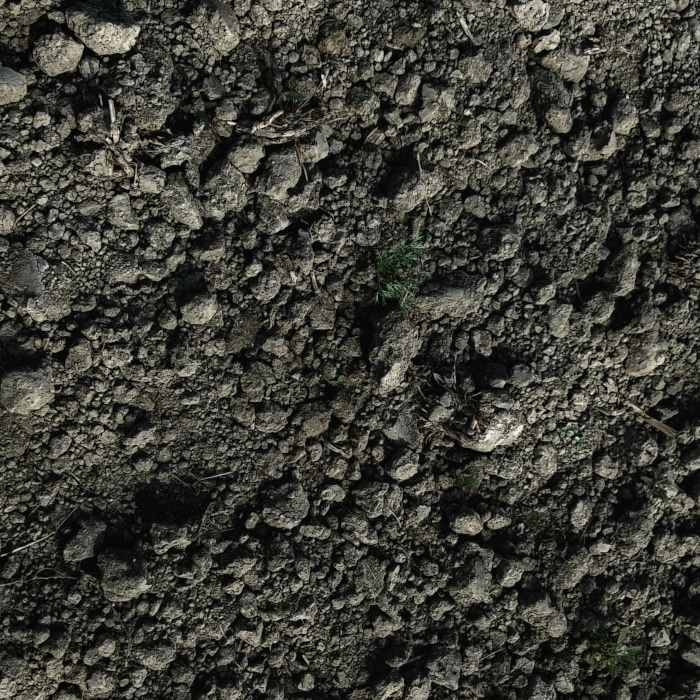
The cracked, parched earth with sparse greenery depicts the typical symptoms of high soil salinity, indicating the urgent need for a soil salinity test.
Interpreting Soil Salinity Test Results
Understanding the results of your soil salinity test is important. The key terms you’ll encounter include:
Electrical Conductivity (EC)
Indicates the salt concentration in the soil. Higher EC levels suggest higher salinity, which can be detrimental to many plants.
Total Soluble Salts (TSS)
Measures the total dissolved salts in the soil, giving a direct indication of salinity levels.
Sodium Adsorption Ratio (SAR)
Assesses the proportion of sodium to other key minerals like calcium and magnesium, indicating sodicity risks.
Exchangeable Sodium Percentage (ESP)
Highlights the amount of sodium relative to other cations. This can influence soil structure, and also permeability as shown by doing a soil permeability test.
These metrics helped me understand the harshness of my garden’s salinity issue, helping guide me towards effective management strategies.
Managing Soil Salinity
Reducing soil salinity and preventing its recurrence involves several strategies:
Leaching Excess Salts
By applying enough water to the soil, you can flush out the salts, moving them beyond the root zone. This method was particularly effective in my garden, gradually alleviating the salinity stress on my plants.
Applying Organic Matter
Incorporating organic materials into the soil can improve its structure, water retention, and resistance to salinity.
Chemical Amendments
In cases of high sodicity, applying gypsum (calcium sulfate) can replace sodium ions with calcium, improving soil structure and allowing for better water infiltration.
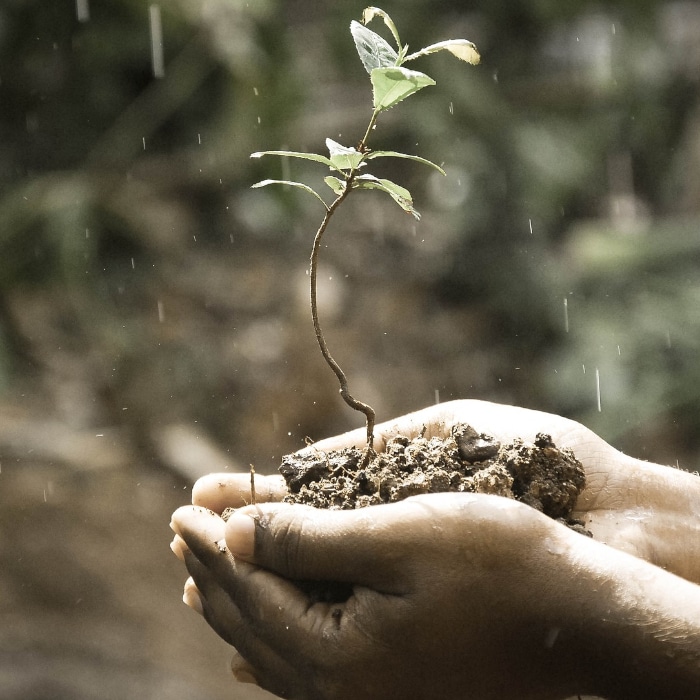
A young plant held in human hands symbolizes the hope for growth and rejuvenation that can come from managing soil conditions with the help of a soil salinity test.
Conclusion
Managing soil salinity is an ongoing process, one that requires regular monitoring and adjustments to your garden care routine. By staying watchful and proactive, you can protect your garden from the silent threat of soil salinity, making sure you lengthen its health and vitality for years to come.
Remember, the first step towards a thriving garden is understanding the soil that nurtures it. So, take the time to soil salinity test, and adjust your gardening practices accordingly. Your plants will thank you for it, thriving in a balanced, healthy environment.



